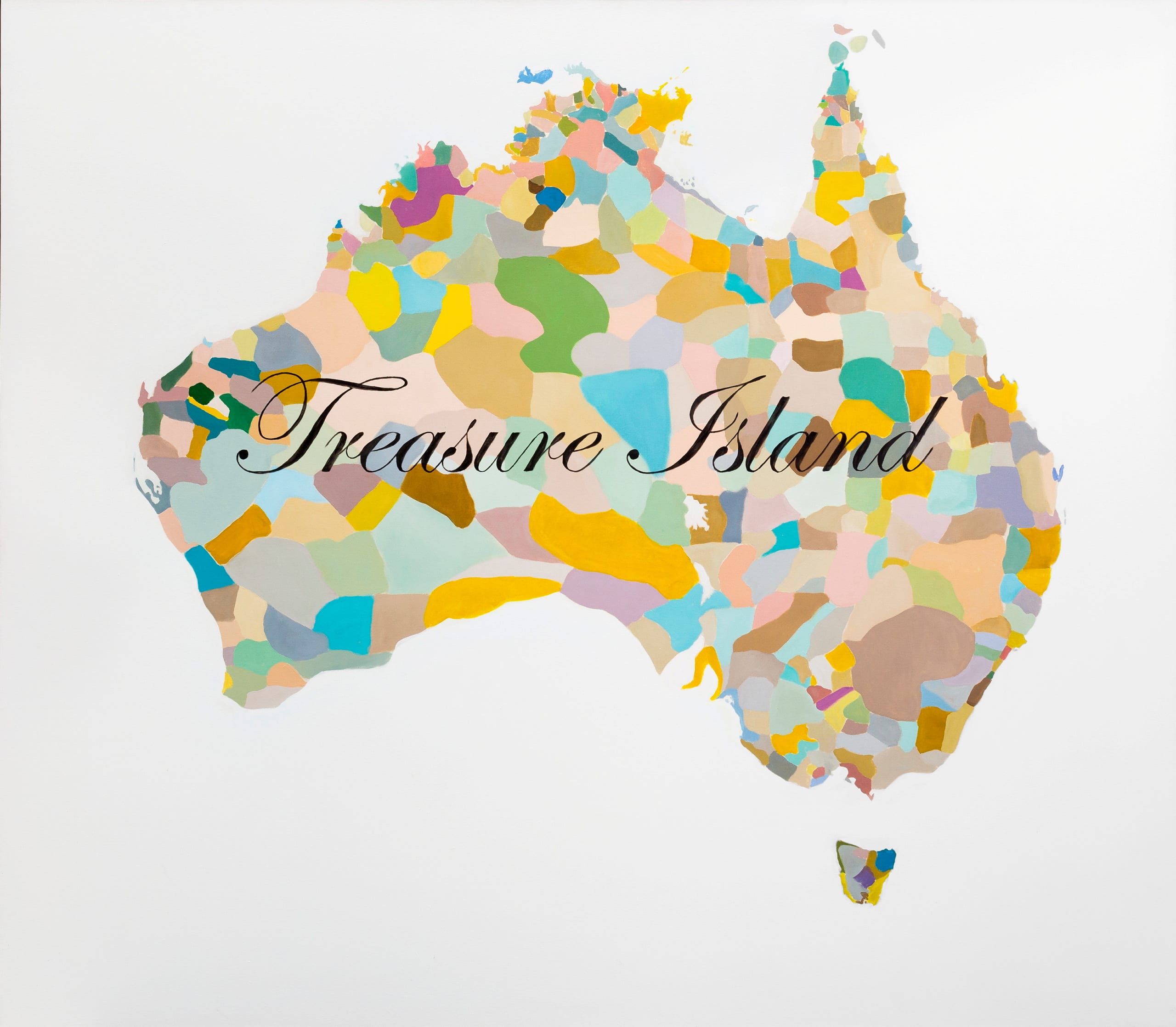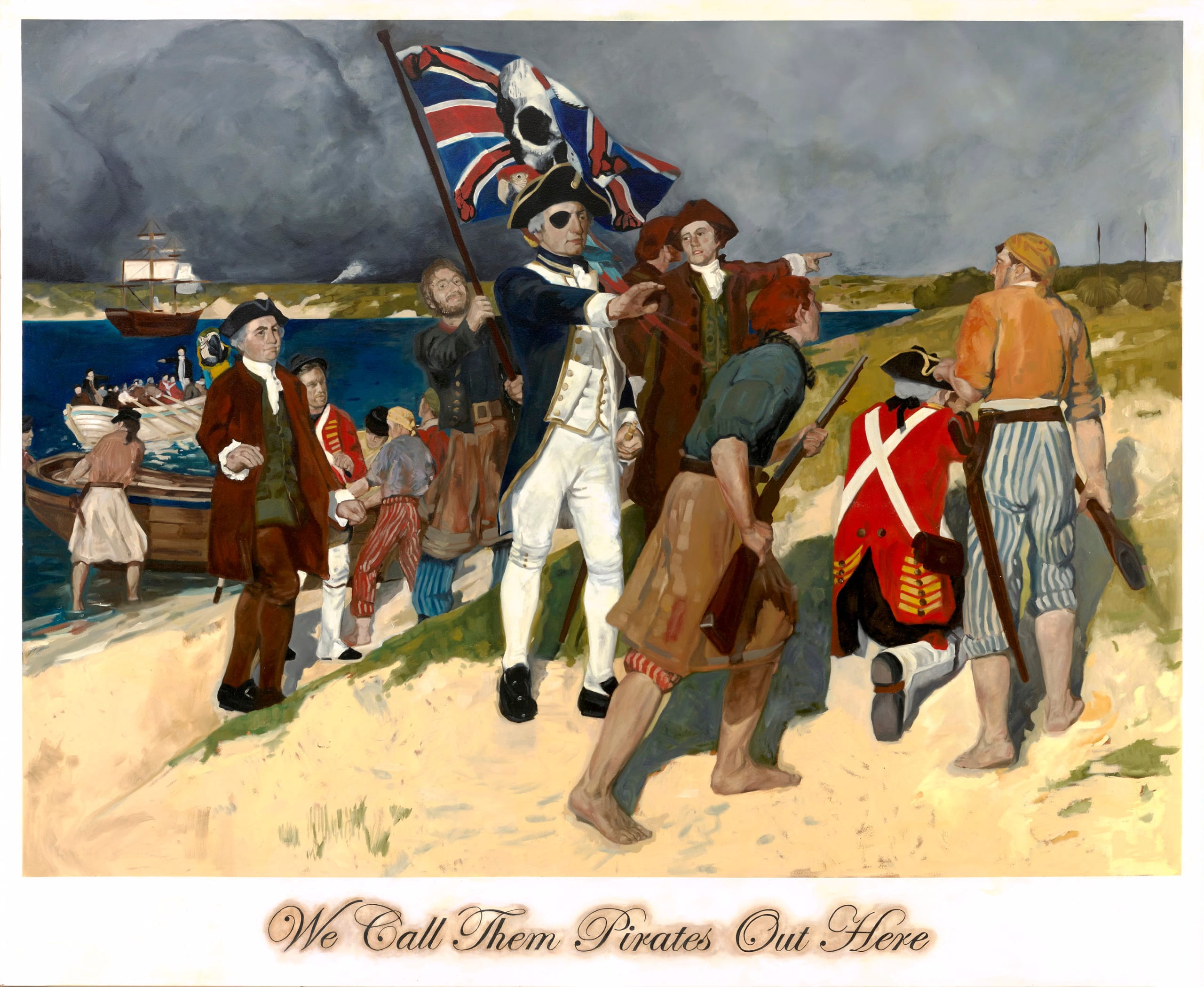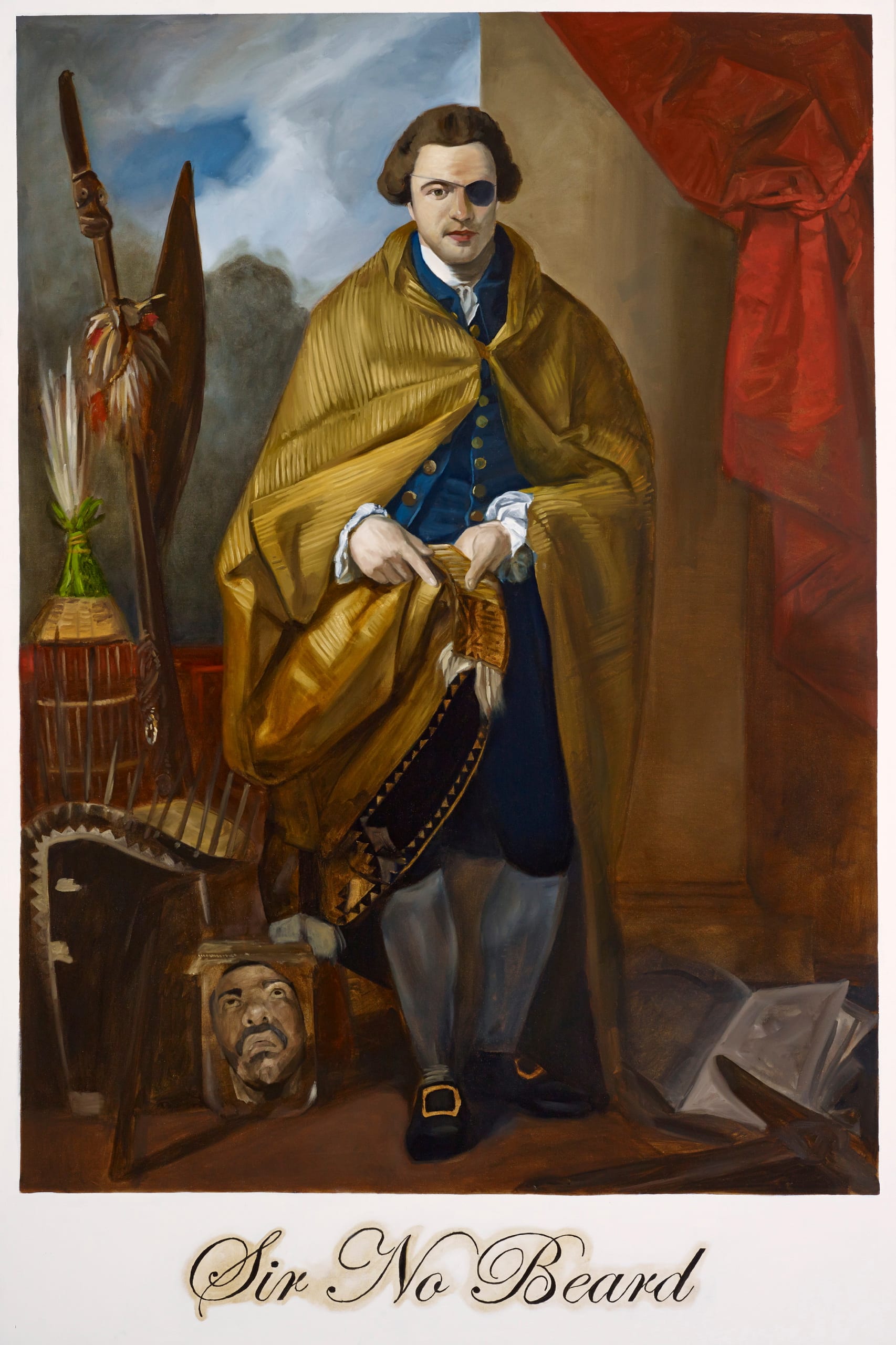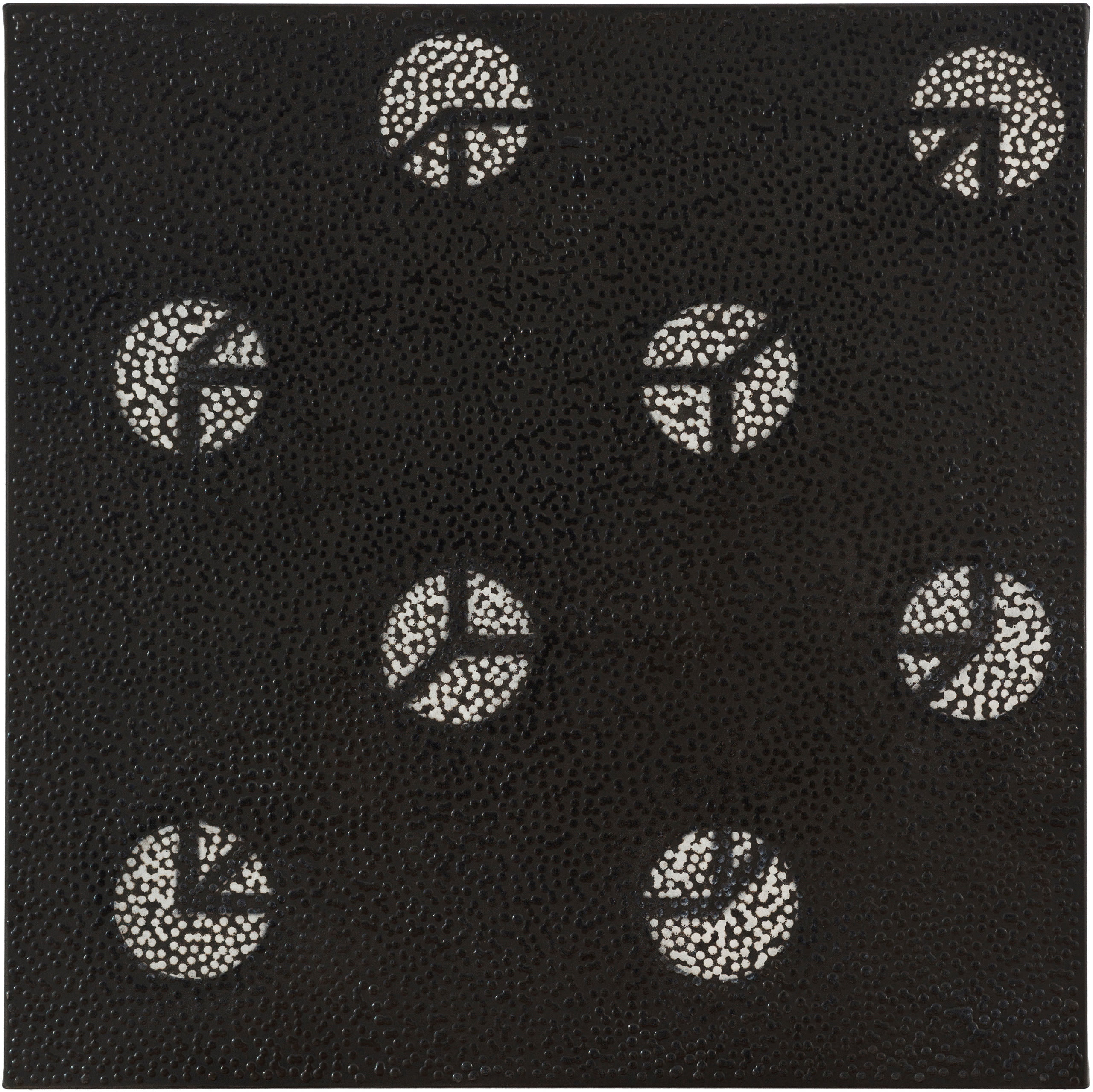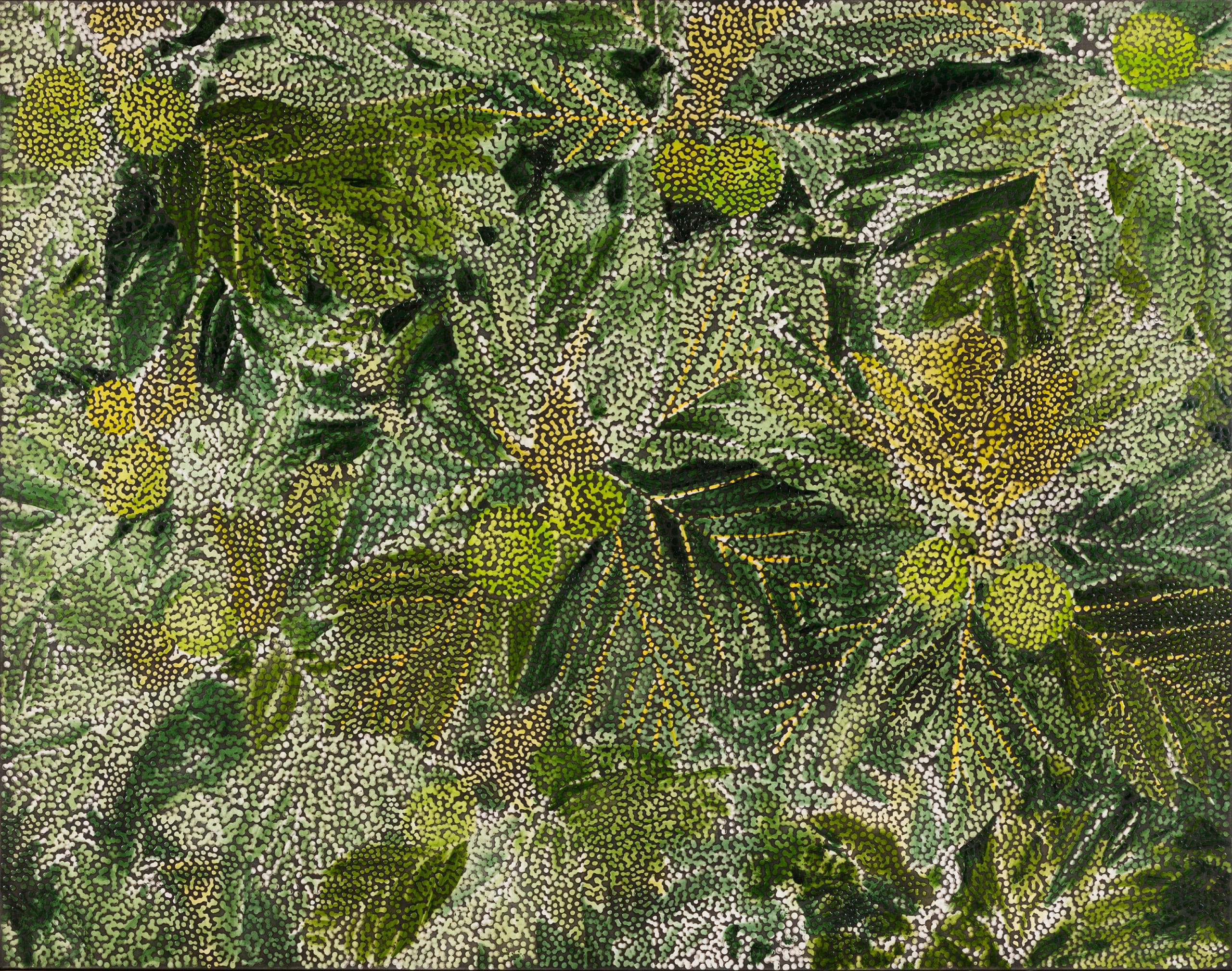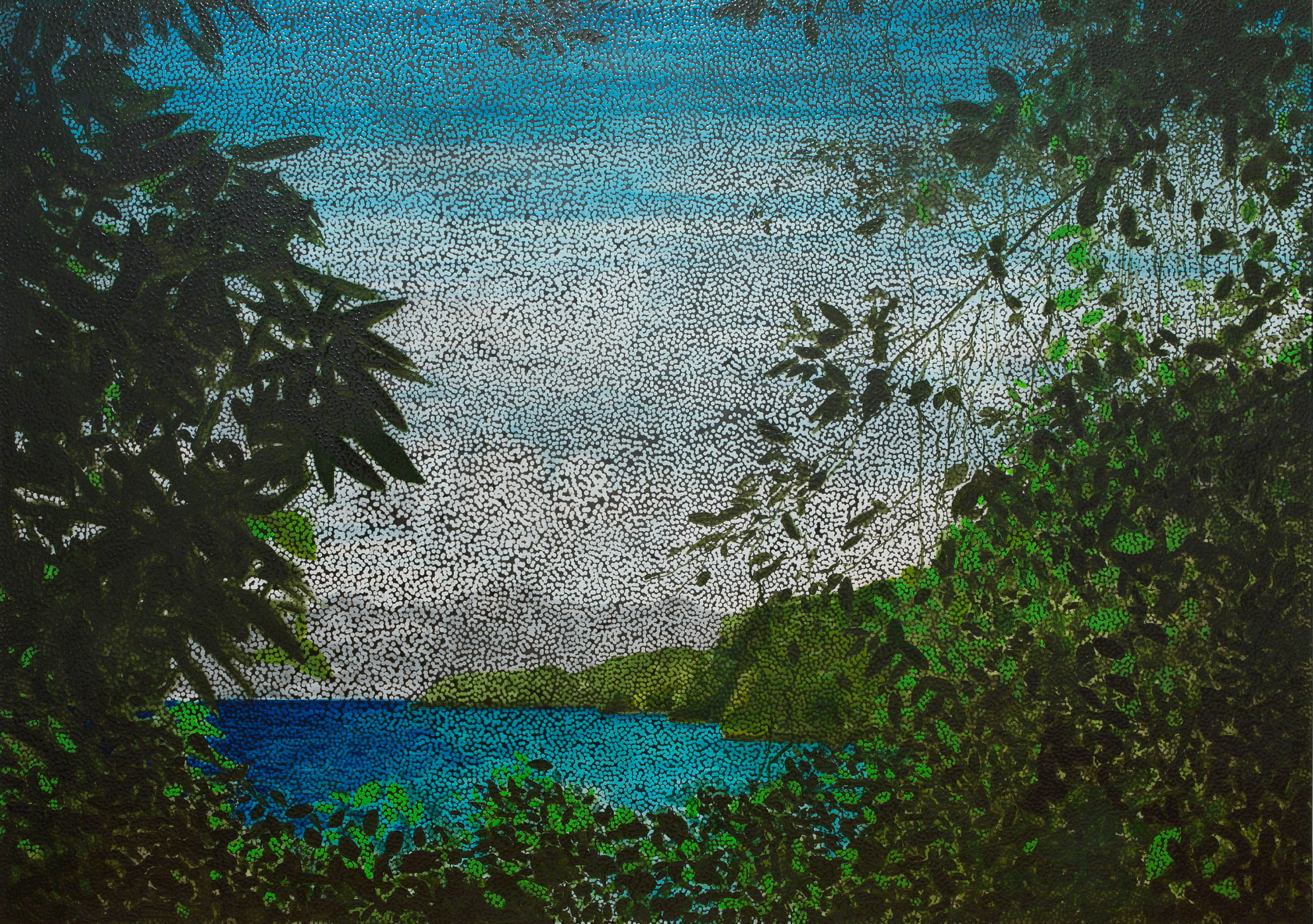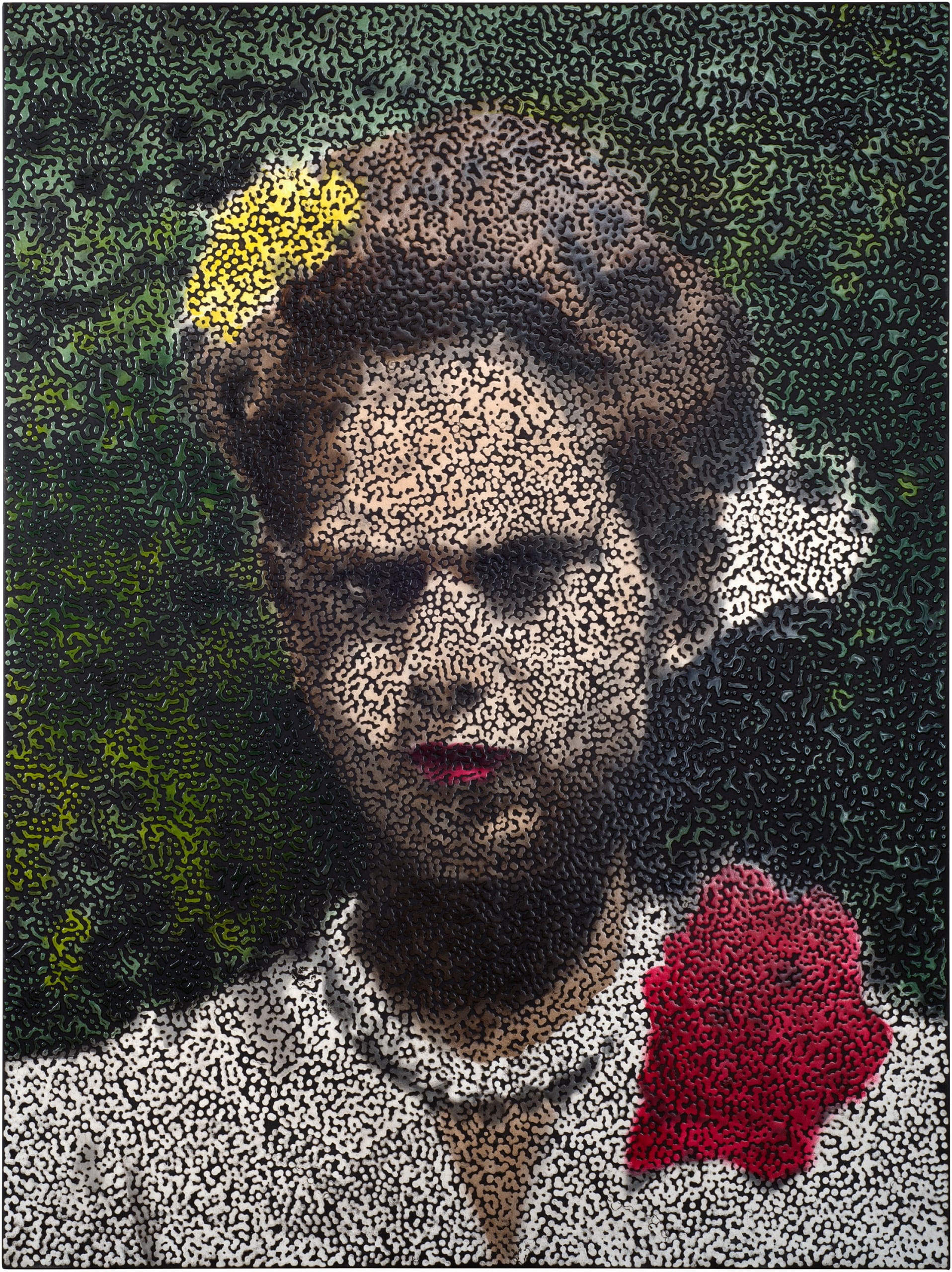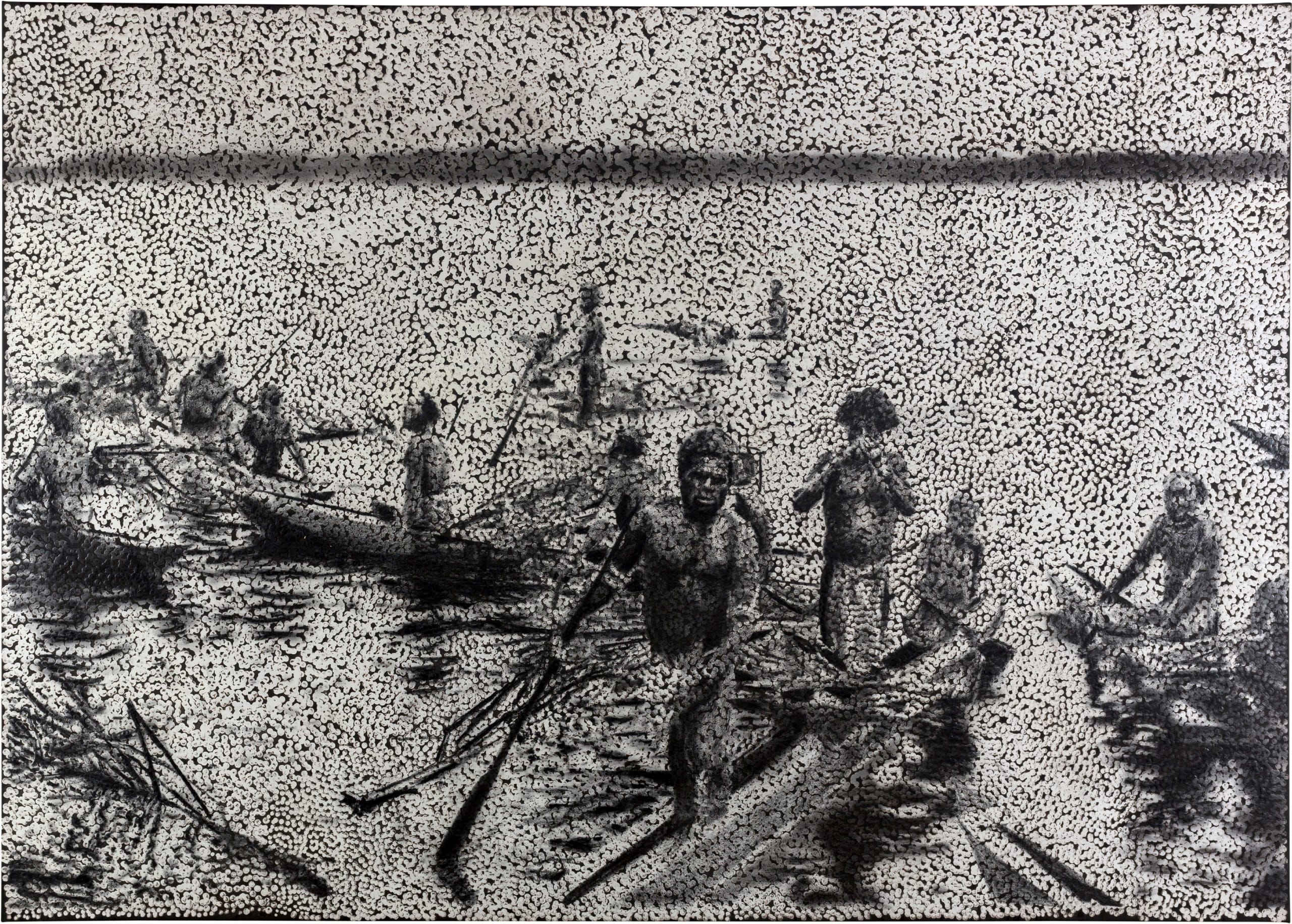The first time I visited Daniel Boyd in 2019 at his Marrickville studio situated in Gadigal and Wangal Country, I got lost. It’s a quick 5-minute drive from my home in Inner West Sydney, but when I arrived, I couldn’t figure out where Dan was amidst the labyrinthine corridors of the former General Motors plant, which had originally opened in 1926. It wasn’t until I heard the soft sounds of reggae music seeping from a closed roller door that I could locate him.
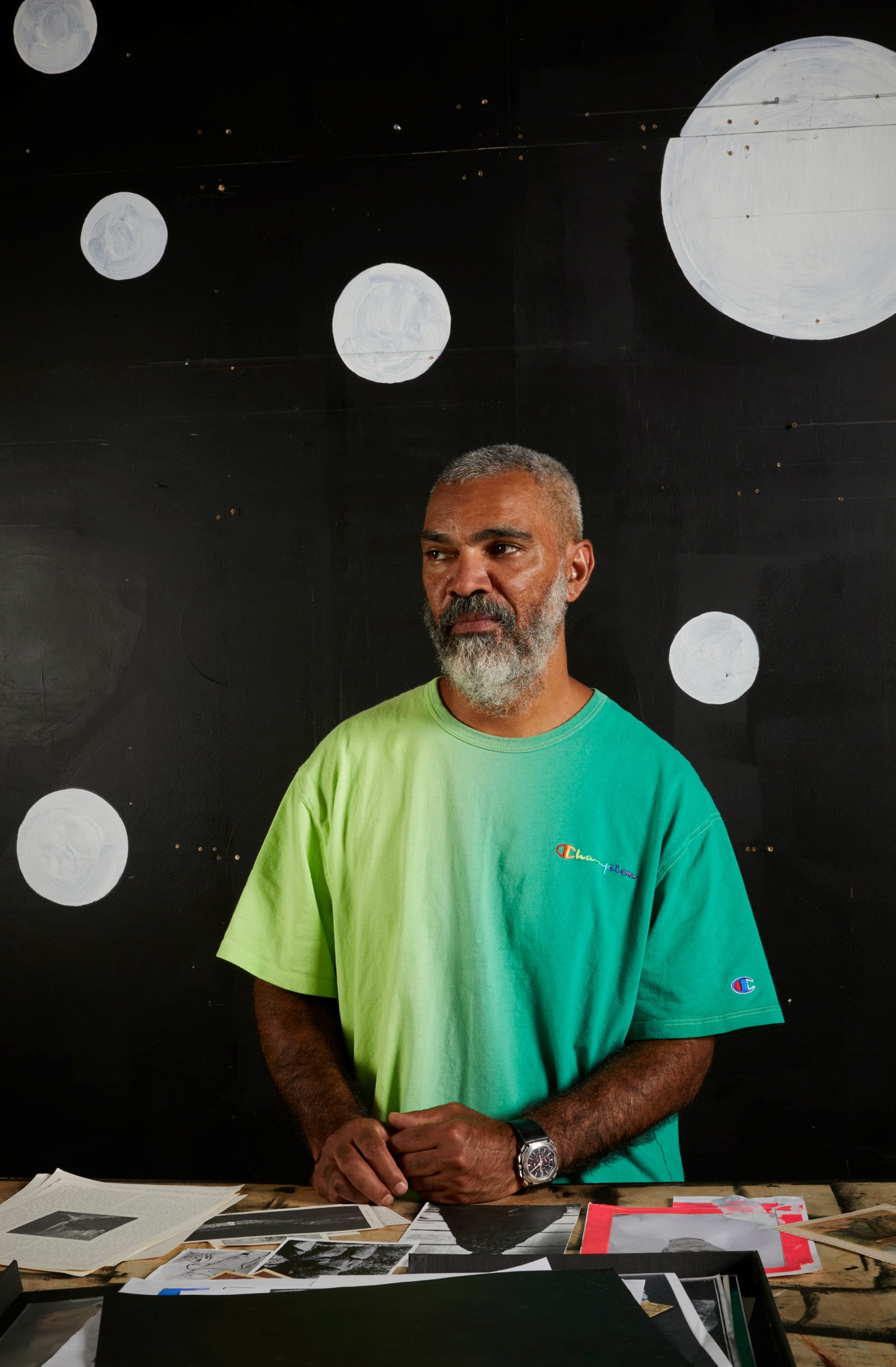
My most recent visit to Dan at his studio ran much more smoothly. I’ve been here many times since, especially over the past year as we planned his first major survey exhibition, ‘Daniel Boyd: Treasure Island’, which I cocurated with Isobel Parker Philip. Having opened at the Art Gallery of New South Wales (AGNSW) in Sydney, in June, it runs until January 29, 2023, and brings together 80 works from across Dan’s near two-decade career. It includes his now iconic ‘No Beard’ series (2005–2007), completed in the final year of his undergraduate degree in Fine Arts at the Australian National University in Kamberri/Canberra, and in the years that immediately followed. This series discloses Dan’s desire for change by confronting the established historical narratives surrounding the colonization of so-called Australia. To foreground the experiences of First Nations people, Dan turned to 18th- and 19th-century British portraiture, which was originally deployed to propagandize the colonization of Aboriginal and Torres Strait Islander peoples and their country. In Dan’s retelling, paintings like We Call Them Pirates Out Here (2006) – a parody of the Australian Impressionist Emanuel Phillips Fox’s work from 1902, Landing of Captain Cook at Botany Bay, 1770 – he dethrones Captain James Cook as ‘the pride of the century.’ Instead, Cook is depicted as a marauding pirate claiming unlawful possession of unceded Aboriginal land. By presenting the narrative in this manner, Dan challenges both the viewer and the colonial perspective around Australia’s ‘discovery.’
‘Treasure Island’ is by no means an exhaustive survey of the last two decades of Dan’s career, but it is intended to fortify his deep thinking and present a body of work that showcases the different and important interpretations of histories from a uniquely First Nations perspective. Since 2009, Dan has approached painting as an interlocked process of inscription and erasure. The clear convex dots that spread across his canvases hold and withhold information. They are islands of image fragments depicting scenes and people drawn from across time and space, which bridge black spaces on the image plane, swallowing up his scenes. An intervention in the act of seeing, the artist refers to these dots as ‘lenses,’ and he is quick to confirm that his paintings have no relationship to the painting style of Aboriginal artists from the Western and Central Desert regions. Instead, Dan’s work plays with the mutability of perception and his lens paintings are informed by Indigenous knowledge systems, Gestalt theory, the allegory of Plato’s cave, and the search for dark matter – ideas that examine how we perceive and understand reality and how the unseen and in-between carry meaning. In paintings like Untitled (WWDTCG) (2020), Untitled (RINYTPOTM #1) (2019), Yamani (2018), and Untitled (SGN) (2016), where a geometry of dots obscures barely discernible images, Dan directly alludes to these ideas and offers clues to deciphering his work. These and others have been brought together in the first room at the AGNSW, so viewers are not only equipped with the tools to ‘read’ a Daniel Boyd painting, but to understand his unique way of seeing the world.
Darkness, or in this case, Indigeneity and Blackness, challenge the idea of the Enlightenment and the bringing of light and knowledge to the rest of the world. This is a recurring theme in Dan’s work, and intersects with the idea of darkness championed by the Martinican poet and philosopher, Édouard Glissant, that is explored throughout the exhibition. Dan is particularly inspired by Glissant’s ‘right to opacity,’ which challenges the constructions of race and the process of acculturation. When applied to Australian Aboriginal people such as Dan and myself, this means that we have the right not to be viewed by our Blackness or Indigeneity, as these terms continue to categorize us in the present. ‘A lot of my works relate to Glissant and his particular philosophies that relate to the Other and claiming the right to be different,’ Dan says. ‘In my work, different lenses represent a plurality or a multiplicity. I’m trying to use these ideas to present something in a way where there is no allowance for bias. I want my work to augment other histories to become part of a common narrative.’
Of the artist’s recent projects, Untitled (33.8688° S, 151.2174° E) (2022), is a series of window installations that appear throughout the exhibition. In these works, Dan transforms the surface of windowpanes into a multitude of apertures. Interrupting our field of vision, he forces us to again navigate the dark spaces that we find across his paintings. By creating an affinity between his canvas works and the view outside the window, Dan reminds us that his practice is about cultivating a way of looking that transcends a specific medium. Also seen in his 2018–2019 work, For Our Country, a memorial to Indigenous servicepeople, featuring a wall of two-way mirrored glass covered in tens of thousands of his lenses, displayed in the grounds of the Australian War Memorial in Kamberri/Canberra, these spatial interventions do not just alter the way we see the world. They also shift the atmospheric tone of where they are installed. ‘For Our Country is about looking at a physical form of plurality, but also multiplicity. You have to acknowledge that space. There’s just black there,’ Dan explains. ‘The reflection of you or objects around you does not exist in space as it should, so you have to acknowledge that you can’t fully comprehend this space. You have to acknowledge that you don’t know everything.’
With each studio visit, I’ve seen Dan’s work in various stages of completion – from the beginnings of an underpainting for a small portrait of Henri Matisse, to the freshly finished Untitled (SOAGS) (2020), Dan’s largest-ever work on canvas, measuring 350 × 570 cm and depicting a Gimuy/Cairns beach at sunset. Currently, Dan is working on numerous canvases for upcoming exhibitions at the Okayama Art Summit, Japan and Gropius Bau, Berlin, and his music is blaring. He’s listening to the saxophonist, John Coltrane, along with Saul Williams’ Unanimous Goldmine, the original soundtrack for Neptune Frost (2021). He has canvases laid out on tables that are covered in remnants of black paint, with some displayed in a haphazard salon hang nearby. There is also a smorgasbord of personal and reference material scattered around in an organized chaos, along with textbooks and art catalogs laid open at particular pages. It becomes hard to ignore how important archival and familial imagery is to Dan’s practice when you’re invited into his space, especially when you see a portrait of his great-grandfather taped on the wall next to a reproduction of 18th-century Scottish artist Allan Ramsay’s portrait of King George III.
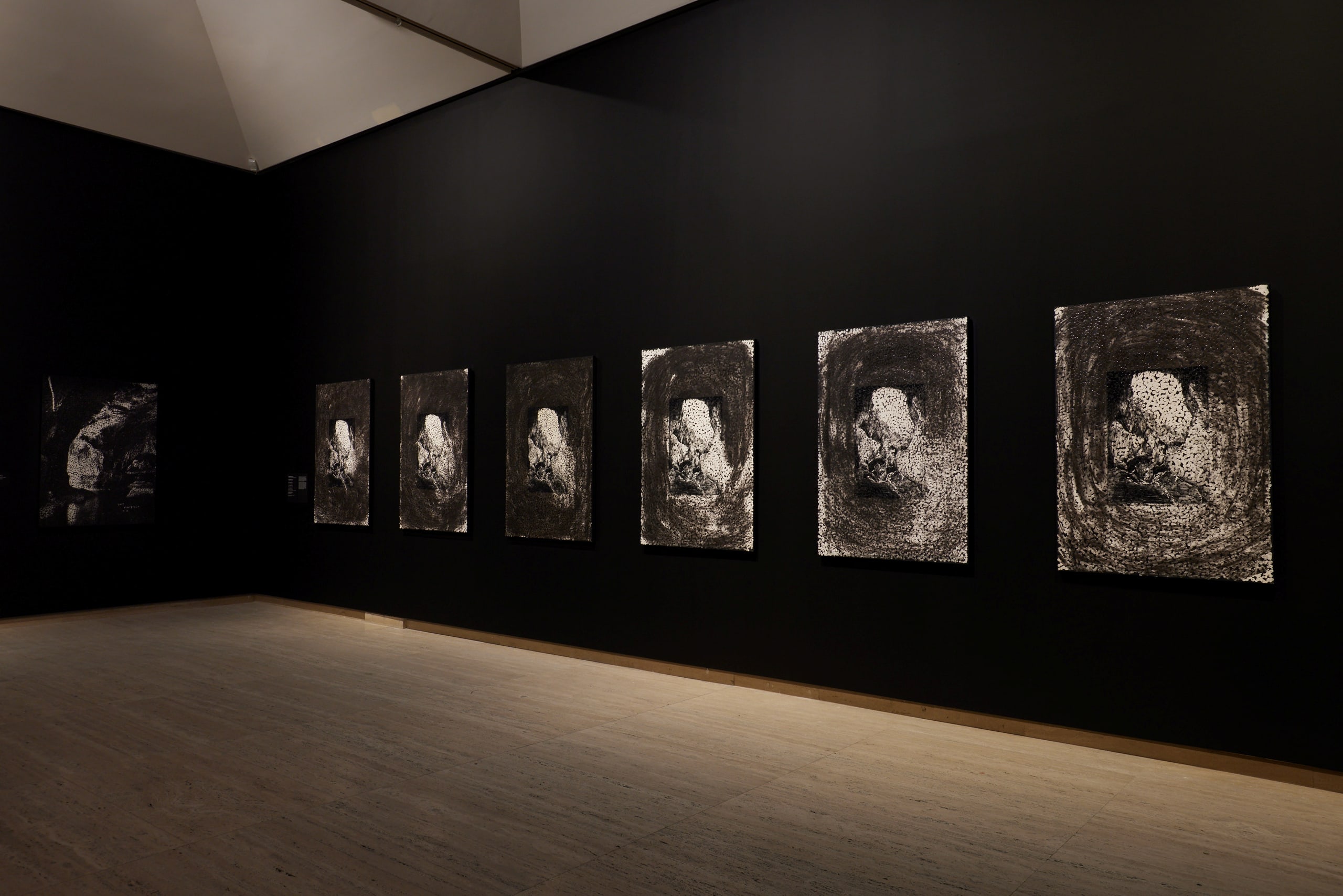
In his studio, Dan also has a prototype for the canopy of an upcoming collaborative work with Sir David Adjaye: a new plaza within Sydney’s Circular Quay precinct. Soon to be unveiled, the canopy is perforated with Dan’s signature lens design. He has also painted this design to scale, and it runs the length of one of the long studio walls, so that he (and visitors) have a sense of exactly just how dense and large this field of apertures will appear. As with For Our Country, it is expected that the light in this new work will spill across the plaza floor, animating the space, and painting its own scene as it moves with the passage of the sun. The speculative openness in Dan’s work, which is arguably most obvious in his spatial interventions, invites literal and multiple entry and exit points into history, revealing the hidden narratives of landscape that are so often ignored. ‘You have to acknowledge this unknown space in order to create a relationship between these lenses,’ Dan points out, ‘to have two ways of looking and seeing.’
Installation view of Daniel Boyd’s exhibition ‘Treasure Island’ at Art Gallery of New South Wales, Sydney, 2022. Courtesy of the artist. Photograph by Jenni Carter for the Art Gallery of New South Wales.
Installation view of Daniel Boyd’s exhibition ‘Treasure Island’ at Art Gallery of New South Wales, Sydney, 2022. Courtesy of the artist. Photograph by Jenni Carter for the Art Gallery of New South Wales.

